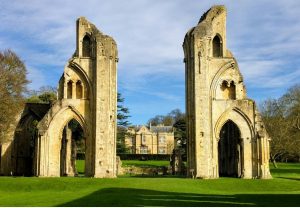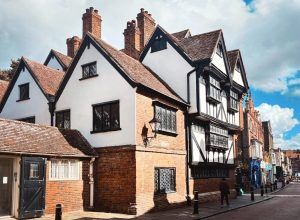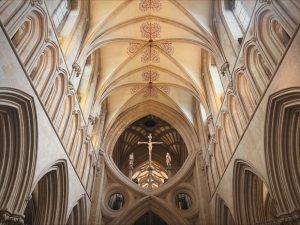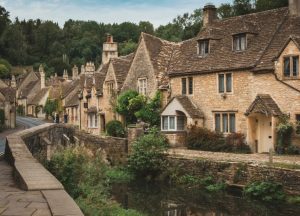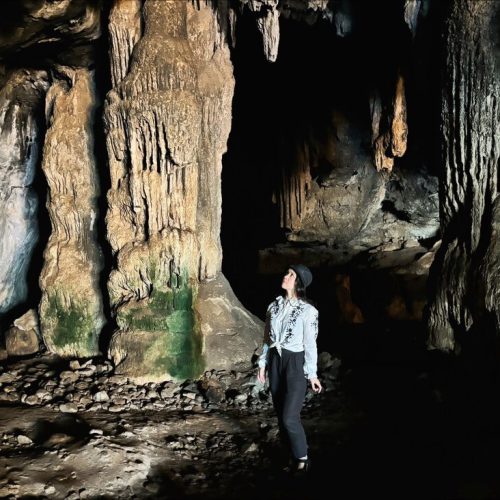
After deciding to spend Christmas with my boyfriend’s family in Brittany consuming an ungodly amount of food, I knew that I had to squeeze in a visit to Mont Saint-Michel situated nearby in Normandy.
Mont Saint-Michel is a UNESCO World Heritage Site and one of France’s most iconic landmarks – a medieval island-fortress rising into the sky like a Gothic fairytale. I had admired it for years from afar through photos, and the anticipation of seeing it with my own eyes was like waiting to unwrap a Christmas present.
Where I stayed: Dinard
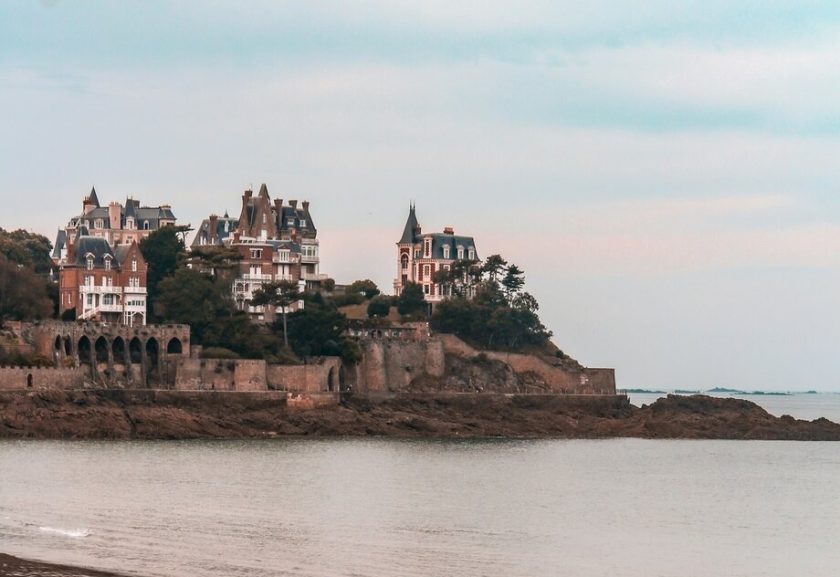
Myself, along with my boyfriend, his sister, and his mother, stayed in the gorgeous coastal town of Dinard, located about 55km from Mont Saint-Michel. Furthermore, there’s Saint Malo and Rennes within close proximity, making it a great base for sightseeing in the region. However, it’s quiet in the wintertime, so if you prefer more a bit more hustle and bustle, I recommend staying in Saint-Malo.
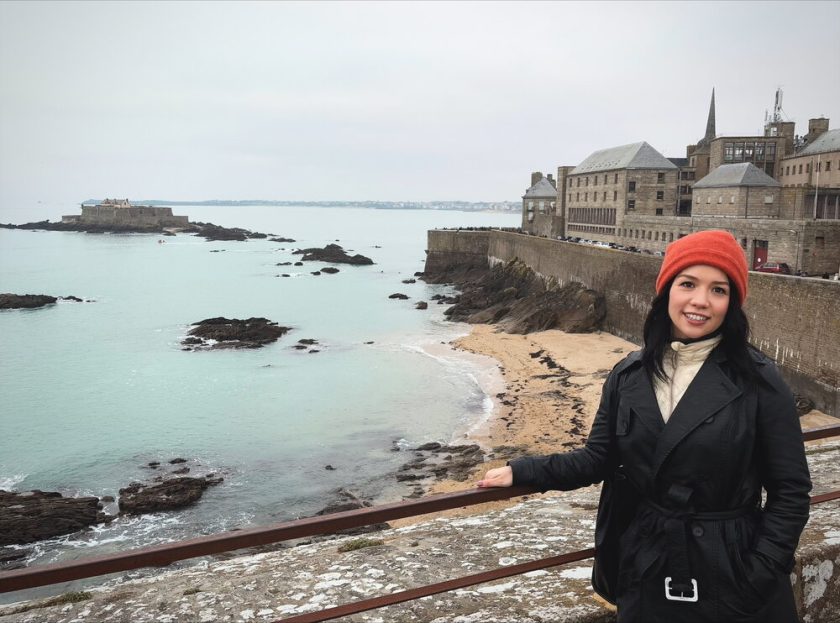
The immediate thing that struck me about Dinard was its resemblance to UK coastal towns. In particular, seaside towns found in Kent where they’re only about 30 kms apart at their closest point across the English Channel, so nature plays by the same rules on both sides.
An uncanny feeling swept over me like I must have been here before. Distance memories of visiting the beach as a child came back to me in little snapshots: clouds of candy floss, sandcastles and plastic spades, lobster-red bodies waddling across the shore. Now it was winter, and the beach before me was empty and beautifully still.
The resemblance of the UK to Northern France makes sense. For centuries, the two places have been tangled in each other’s history, culture, and even architecture. The Normans settled in northern France, and then famously invaded England in 1066, bringing their building styles, governance, and language.
In the centuries that followed, the cultural traffic flowed both ways. Norman stone churches and half-timbered houses echo the architecture of the English countryside, while British influence crept back during the 19th-century seaside boom, when wealthy Britons built villas in places like Dinard and nearby Deauville, and Dieppe.
Driving to Mont Saint-Michel
The drive from Dinard to Mont Saint-Michel was swift, passing through countryside and small scenic towns. We stopped just before reaching our final destination in the town of Beauvoir and ordered crepes for breakfast. With our bellies now full, we continued for another ten minutes’ before reaching the car park.
After parking up, we could either walk or take the shuttle bus named “Le Passeur” that runs back and fourth to the fortress. Any other season the 2.5km walk would have been our preferred choice, but the winter chill decided for us that the bus would be the best option. The journey didn’t take long, in total no more than ten minutes, and there were a few stops along the way should we decide to walk part of the route.
Arrival at Mont Saint-Michel
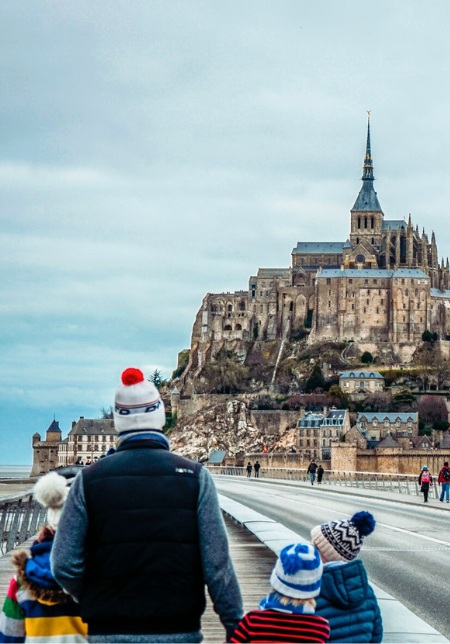
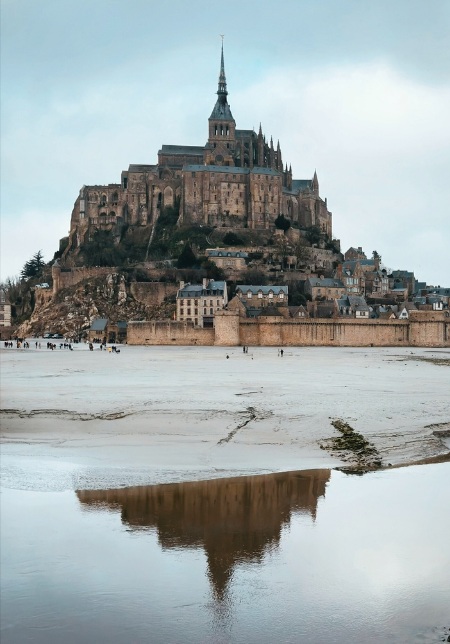
We jumped off at the causeway, a modern path that connects the island to the mainland and marvelled at the fortress crowned by a medieval abbey rising dramatically from the tidal waters of Normandy, all spires and defiance – a Gothic exclamation mark on the horizon. The photos are impressive, and in real life, in all its 3D glory, it’s even more impressive.
The temperature was low but thankfully the winter light was bright and streams of pale blue washed over the sky like a watercolour painting. In summer, I’m told the place is surrounded by crowds and buses. In winter, it feels like the 14th century never left.
However, once we entered through the main gates crowds gathered inside. It was the period between Christmas and New Year, when most people still have time off work, and I guess like us, had the same idea to visit Mont Saint-Michel. Can you blame us? It wasn’t too busy though, and I soon discovered the narrow alleyways that meander off La Grande Rue (the Main Street) were quiet and almost empty by comparison.
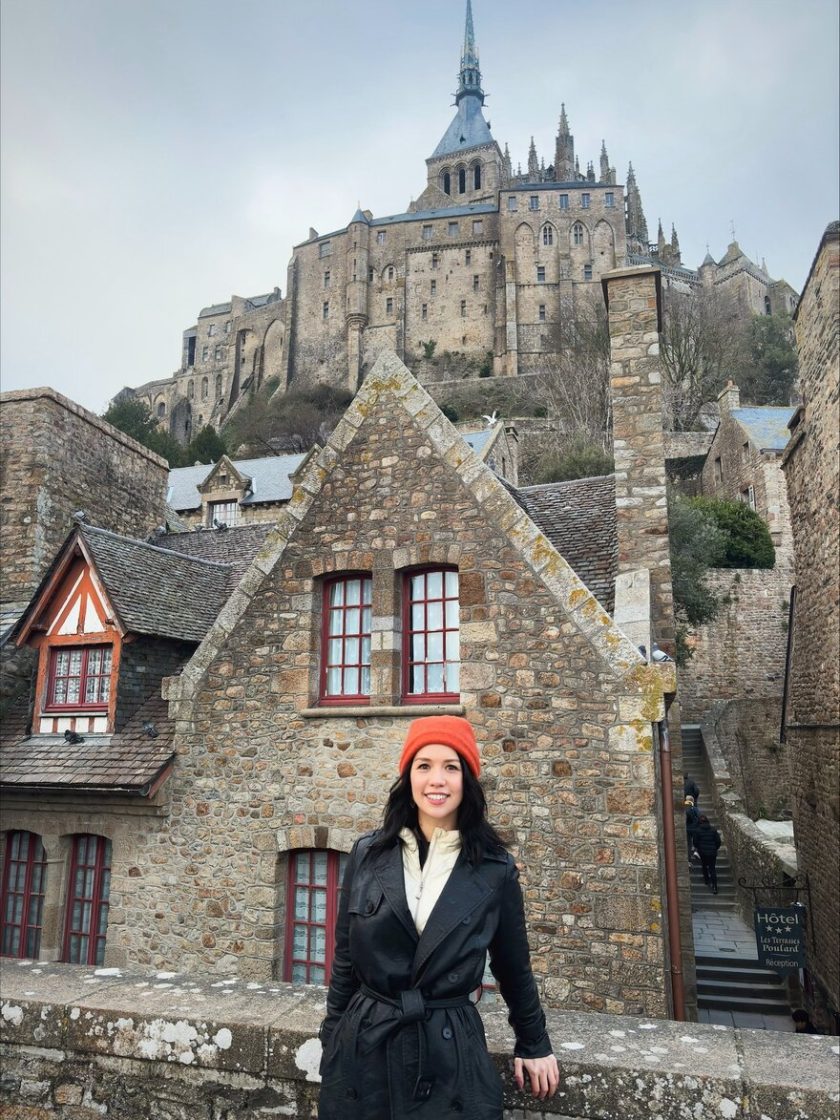
We set our sights for the abbey, weaving between the fortress walls like we were exploring the set of a film. Within the walls are gorgeous timber-framed buildings that function mostly as guesthouses, cafes, souvenir shops and a few homes for those who live on this special island. To be honest, I didn’t go inside of any of the souvenir shops, hoping to preserve the illusion that I had travelled back in time.
We climbed higher and the vistas stretched out far into the horizon. The tide was low but swirls of water spun across the beach like liquid ribbons.
Exploring the abbey
The abbey at Mont Saint-Michel doesn’t just sit on its rock – it dominates it. The legend says Archangel Michael appeared to the Bishop of Avranches in 708 and told him to build here. When the bishop hesitated, the archangel supposedly burned a hole in his skull with a fiery finger. Point taken.
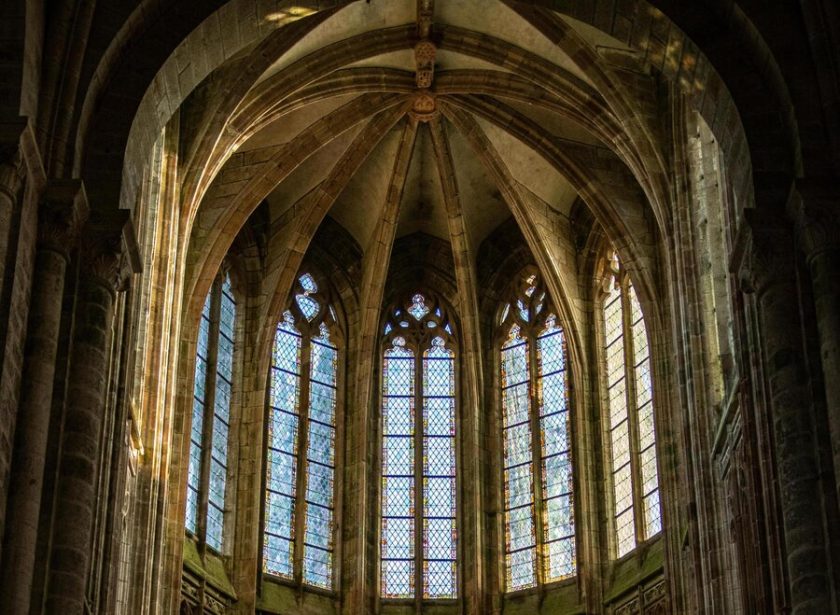
The first church was small, a humble speck on the tidal island. By the 11th century, the Benedictines took over and decided humble was overrated. They started stacking Romanesque arches and granite walls on top of one another, then went even higher in the 13th century. Once you’re inside, it’s hard to believe such a massive monument could be build on top of a rock.
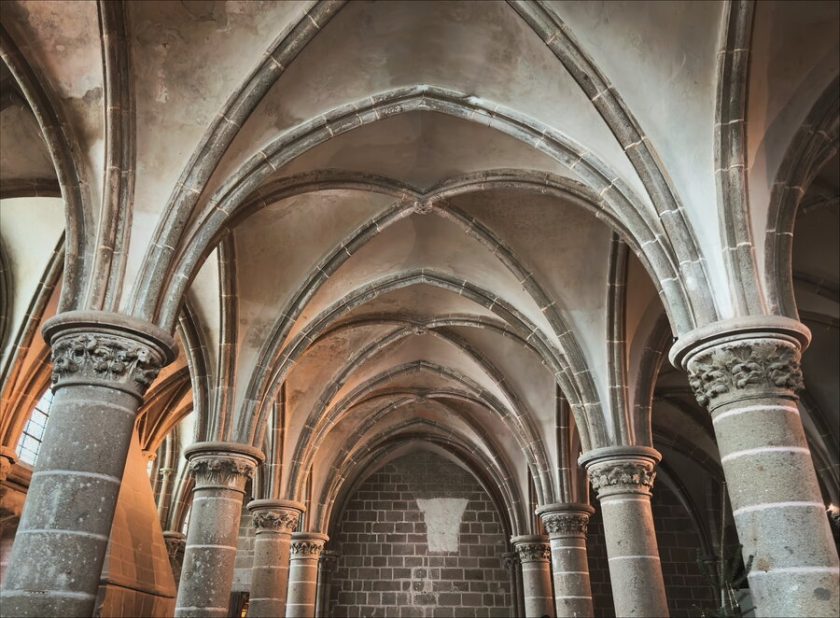
War shaped the place as much as worship. During the Hundred Years’ War, the English threw everything they had at it – siege engines, blockades, the works. The abbey shrugged it off, its ramparts and tides making it untouchable.
Later, during the French Revolution, monks were expelled and the abbey was turned into a prison. For decades, it held political prisoners, thieves, and just about anyone who dared cross Napoleon I. Now it’s the monks who are back, chanting in the cool shadows while visitors shuffle through, necks craned.
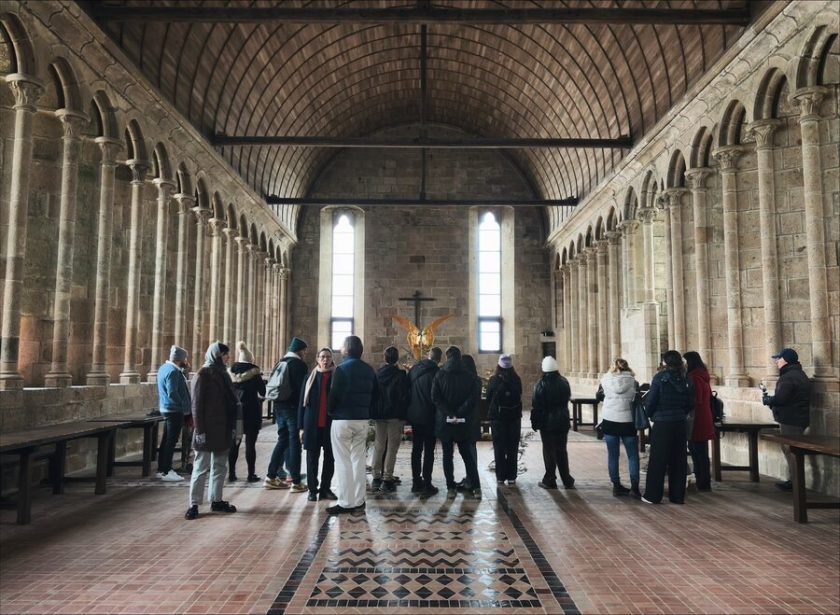
My favourite room in the abbey came in the form of The Refectory, the main dining hall for the monks. The simple yet elegant space has a unique architectural illusion. The stained glass windows are set into a series of slender recesses. When one enters the room, the windows are hidden from sight and yet the entire space is illuminated. Magical stuff.
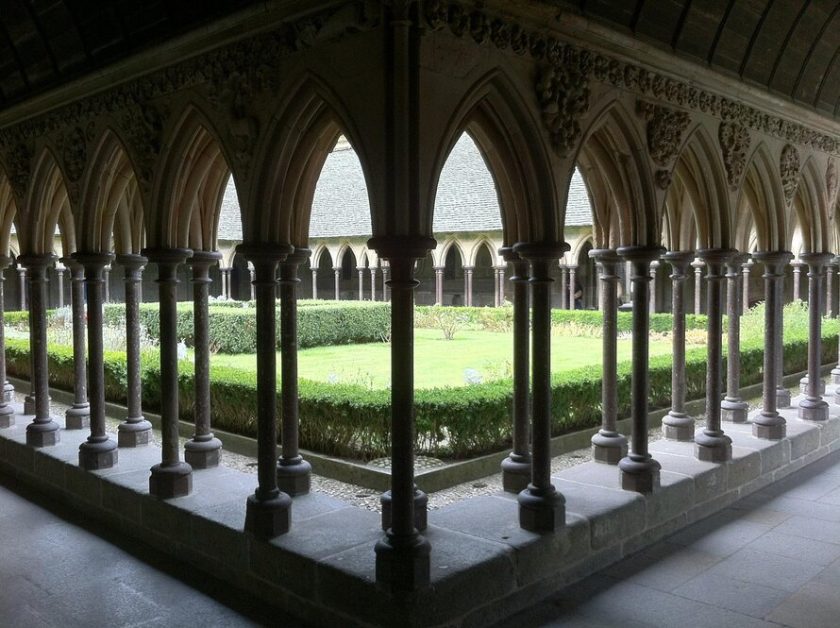
The cloisters, with its beautiful arcades and stone columns positioned around a rectangular inner courtyard also offers a peaceful spot in Mont Saint-Michel to soak it all in.
My verdict: is Mont Saint-Michel worth visiting?
Absolutely! Yes, it’s touristy but there’s enough space for the crowds to disperse, particularly during off-peak months. There’s no where else like it in France so you can understand why it draws the crowds.
I did wonder if I might be disappointed visiting in winter if the weather had been dull and dreary. Now that I’ve been I’m certain it’s the kind of place that has the power to transform any landscape despite the elements. Call it the power of Gothic beauty. I’ve seen this quality in places that possess an aura unto their own.
You leave knowing you’ve walked through a place where centuries don’t pass – they stack. And Mont Saint-Michel wears every single one of them in its stones. The place has weight, and you don’t forget it.
Prefer to join a tour of Mont Saint-Michel?
Numerous day tours operate from Paris, Rennes, and other nearby cities, offering guided experiences with transportation included. Take a look at the available tours to Mont Saint-Michel with Get Your Guide.
Check the tides
Mont Saint-Michel is famous for its dramatic tides, among the highest in Europe. Check the tidal schedule before your visit to witness the island transform from a peninsula to an island. During high tides, the causeway can be submerged.


